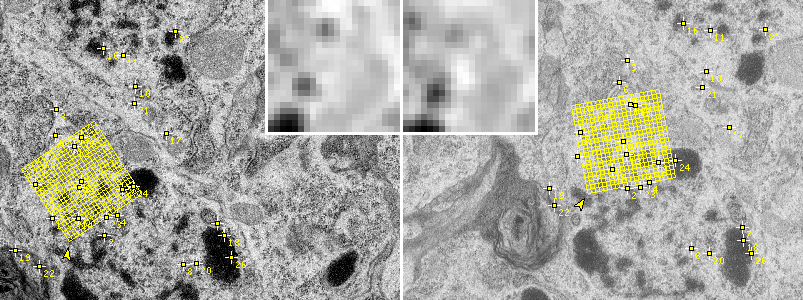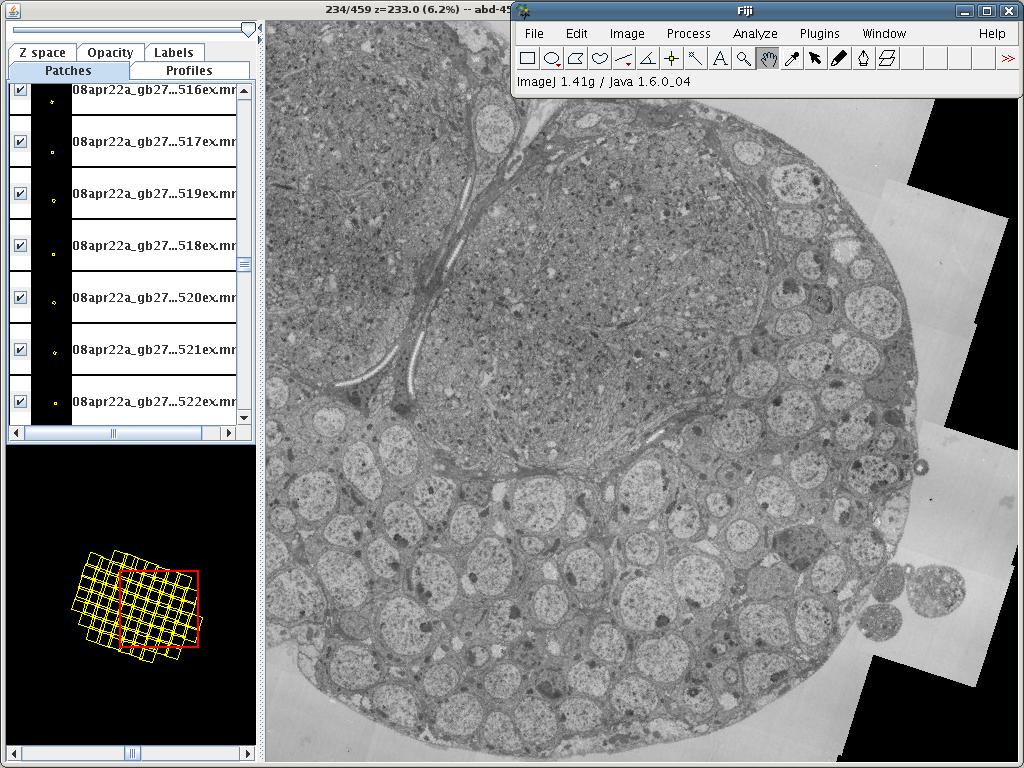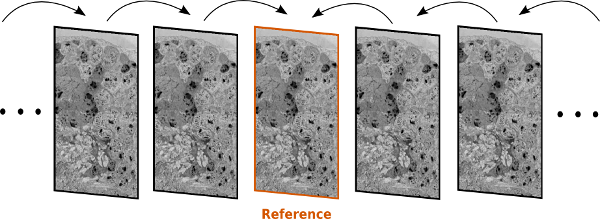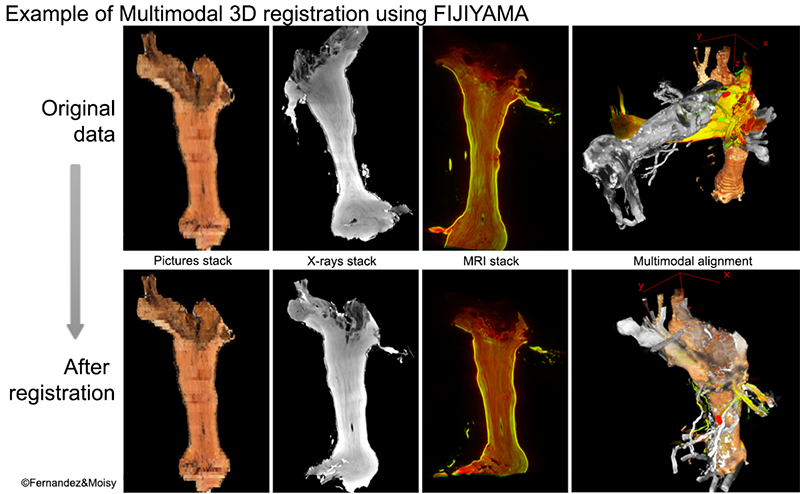Registration
What is Registration?
Image registration is the process of transforming different sets of image data into one coordinate system. Image data may be multiple photographs, data from different sensors, times, depths, or viewpoints. It is used in computer vision, medical imaging, biological imaging and brain mapping, military automatic target recognition, and compiling and analyzing images and data from satellites. Registration is necessary in order to be able to compare or integrate the data obtained from these different measurements.
Essentially, image registration is used to align two or more images of the same scene. The transformation function, the method for modifying the spatial relationship between pixels, needs to be estimated/modeled in order to register the two images. The input image is the image that will be transformed, and the reference image is the one against which the input is registered. Geometric distortions causing differences in angle, orientation, shifting, and distance need to be taken into account. One of the most common methods to do image registration uses points that correspond to locations known in both the input and reference images. Tools exist in ImageJ that can automatically detect such correspondence points to then estimate the transformation function.
Recommended ImageJ Plugins for Registration
Here we summarize some of the Registration plugins in ImageJ.
| Plugin Name | Short Description | Highlights | Plugin Snapshot |
| Feature Extraction | A tool for identifying a set of corresponding points of interest in two images |
|
 MOPS feature correspondences (example 1) MOPS feature correspondences (example 1)
|
| Linear Stack Alignment with SIFT | A tool for aligning image stacks |
|
|
| BUnwarpJ | A tool for elastic and consistent image registration |
|

|
| TrakEM2 | A tool for morphological data mining, three-dimensional modeling and image stitching, registration, editing and annotation |
|

|
| Register Virtual Stack Slices | A tool that takes a sequence of image slices stored in a folder and delivers a list of registered image slices |
|

|
| Fijiyama | A registration tool for 3D multimodal time-lapse imaging |
|

|
Other pages and tools for Registration in ImageJ
See Category:Registration for other ImageJ pages and tools about image registration.- ↑ Lowe D (2004), "Distinctive Image Features from Scale-Invariant Keypoints", International Journal of Computer Vision 60 (2): 91-110
